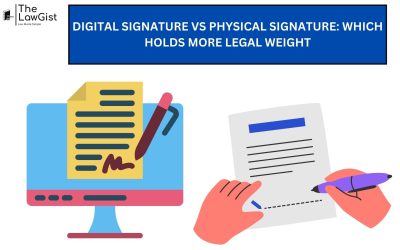The 21st century has witnessed a transformative e-revolution, reshaping lives through computers, the Internet, and ICT. E-communication has eclipsed paper-based methods, giving rise to terms like the cyber world and e-transactions. However, the dark side of technology has led to cybercrime, prompting the creation of Cyber Law. In India, the Information Technology Act of 2000, aligned with UNCITRAL, addresses cybercrimes and governs e-commerce. Notably, the Cyber Appellate Tribunal (CAT), established under this act, holds appellate jurisdiction over decisions related to cyber issues, underscoring the legal measures to navigate the evolving digital landscape.
ESTABLISHMENT OF THE TRIBUNAL (SECTION 48)
The Telecom Disputes Settlement and Appellate Tribunal, established under the Telecom Regulatory Authority of India Act, 1997, is designated as the Appellate Tribunal for the Information Technology Act of 2000. The central government specifies matters and places under the CAT’s jurisdiction through notifications.
FINALITY OF ORDERS (SECTION 55)
Section 55 of Information Technology (IT) Act,2000 prohibits judicial review of two matters: the order designating the CAT Chairperson by the Central Government and any procedure before the CAT based solely on a flaw in its constitution, ensuring the uninterrupted operation of the Tribunal.
APPEAL TO CYBER APPELLATE TRIBUNAL (SECTION 57)
Section 57 of Information Technology (IT) Act,2000 allows individuals dissatisfied with the Controller’s or Adjudicating Officer’s decision to file a complaint with the CAT within 45 days, subject to specified fees. The CAT, if satisfied with grounds for delay, may hear appeals even after the 45-day period. The Tribunal aims to resolve appeals within six months and transmits copies of orders to relevant parties and authorities.
POWER AND PROCEDURE OF THE CYBER APPELLATE TRIBUNAL (SECTION 58)
Section 58 of Information Technology (IT) Act,2000 outlines the CAT’s powers and procedures, emphasizing its non-binding nature to the Code of Civil Procedure, 1908. The CAT follows principles of natural justice and regulates its procedures. It is granted powers similar to a civil court under the Code of Civil Procedure, 1908, for various matters. The CAT is considered a civil court for certain legal proceedings.
RIGHT TO LEGAL REPRESENTATION (SECTION 59)
Section 59 of Information Technology (IT) Act,2000 grants appellants the option to appear in person or appoint legal representatives before the Tribunal, ensuring a fair and just legal process.
LIMITATION (SECTION 60)
Section 60 of Information Technology (IT) Act,2000 subjects CAT appeals to the limitations of the Limitation Act of 1963, ensuring that appeals are filed within a specified timeframe.
CIVIL COURT NOT TO HAVE JURISDICTION (SECTION 61)
Section 61 of Information Technology (IT) Act,2000 restricts civil courts from considering suits or actions falling under the jurisdiction of the CAT. No court can issue injunctions against actions authorized by the Information Technology Act of 2000.
APPEAL TO THE HIGH COURT (SECTION 62)
Section 62 of Information Technology (IT) Act,2000 allows individuals aggrieved by CAT decisions to appeal to the High Court within sixty days. The High Court may extend the submission period under certain conditions.
COMPOUNDING OF CONTRAVENTIONS (SECTION 63)
Section 63 of Information Technology (IT) Act,2000 permits the compounding of contraventions under the Act, either before or after adjudication proceedings. The Controller or authorized officers may compound contraventions with specified conditions, ensuring a streamlined resolution process.
RECOVERY OF PENALTY (SECTION 64)
Section 64 of Information Technology (IT) Act,2000 outlines the collection of unpaid penalties as land revenue arrears and the suspension of licenses or digital signature certificates until the penalties are paid.
EXAMPLE AND ANALYSIS
Example: A company appeals a fine for cybersecurity breach to the Cyber Appellate Tribunal under the IT Act.
Analysis l: The Information Technology Act of 2000 aimed to facilitate and secure electronic transactions while safeguarding against cybercrime. The Cyber Appellate Tribunal was established to combat cybercrime and ensure justice. Enhancing public and government awareness, increasing staff, and improving technical capabilities are crucial for the effective functioning of the CAT. Upholding the integrity, secrecy, and authenticity of communication routes and procedures is essential in navigating the complexities of the digital legal landscape.
Reference








